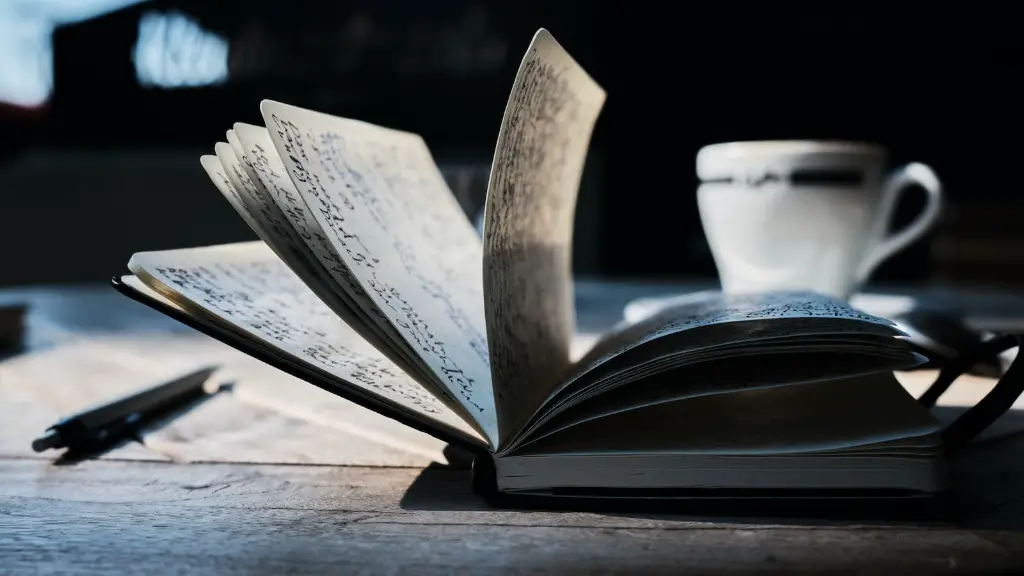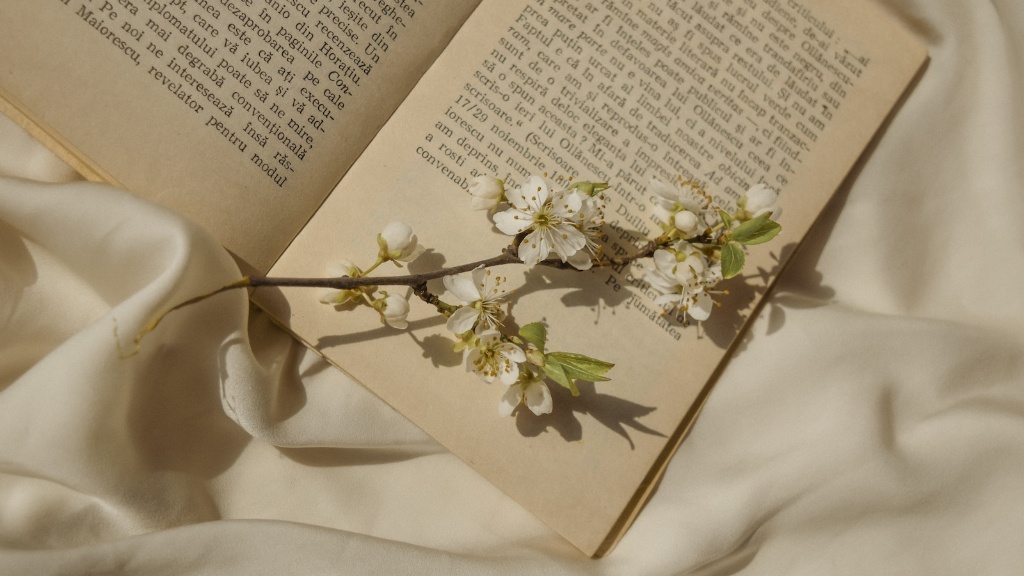Emily Dickinson’s style of poetry is distinct, bold and haunting. Though her works feature simple language, they have a mastery of emotion that resonates with readers of all ages. Known for her powerful imagery, Dickinson was a poet who broke from the traditional American conventions of her time and developed her own unique voice.
Dickinson’s style of poetry is marked by its concision and subtle yet provocative phrasing. Instead of song-like melodies and an abundance of adjectives, Dickinson’s verse is often composed of short, bare-bones lines and carefully-chosen words that summon intense emotions. She was not interested in concealing her feelings through metaphors, but rather, expressed them straightforwardly and honestly.
Though the content of Dickinson’s poetry is often personal and emotional, her syntax is imaginative and often surprising. Like a lens, Dickinson creates sharp images of everyday life that capture emotional moments at their peak. Instead of following the conventions of writing in her time, Dickinson’s verses make sudden and unexpected turns that can sometimes leave the reader with a sense of unease.
Dickinson’s style of poetry is also recognized for its use of enjambment – a device used to add emphasis and create a sense of surprise in the reader. Emily Dickinson uses enjambment to juxtapose two distinct ideas, or to make an unexpected connection between two concepts. This technique of cutting a sentence in half creates a flow in the reader’s mind that can effectively heighten emotions and create a deep contemplation of the poem.
Emily Dickinson’s works can be seen as a way of connecting people from all walks of life. Through her words, she allows readers to feel her innermost thoughts and, in doing so, to brighten and unify their own experiences. Her poems have endured over time and continue to startle, surprise and move readers around the world.
Reticence
Emily Dickinson’s style of poetry also reflects her reclusive and private life. Instead of making public appearances or addressing large groups of people, Dickinson chose to live within the walls of her bedroom and express her innermost thoughts and feelings through her poems. At times, Dickinson’s poems can appear to be cryptic, as if she was trying to hide the true meaning from the reader. This was Dickinson’s way of creating her own sense of privacy and autonomy, her way of saying, “My thoughts are my own.”
Though Dickinson’s poems contain personal meaning, they are also open to interpretation. Many readers have decoded her reticent language, finding true understanding of the poet, her life and the world around her. Her words, though hidden, were a way for Emily Dickinson to introduce herself to the world from her bedroom bedroom, her sanctuary.
Furthermore, Dickinson’s reclusive life and unexpected bursts of emotion create a dynamic tension that gives her poems a unique flavor. As readers, we have to dig and search through the lines to truly empathize with the poet, who is desperately trying to express herself and make a connection to the world, her only source of solace and comfort.
Structure
Emily Dickinson wrote her poetry in strict form, repeating and refining her own idiosyncratic techniques. She used short lines that created an impression of compression and immediacy, as if the images flashed into her thoughts were meant to be shared with the world. In addition, Dickinson used enjambment and slant rhyme to give her poems movement and momentum. These techniques allowed her to breathe fresh and vivid life into her words.
Many of Dickinson’s poems take the form of two quatrains with an abcb-rhyme scheme. This form often lends itself to her use of enjambment, creating an undulating rhythm that accentuates the feeling in her words. The combination of these techniques often makes Dickinson’s poetry complex and difficult to interpret, creating an air of enigmatic mystery and a timeless bond between reader and poet.
As a poet, Dickinson’s works are often seen as modern, non-traditional, and daring. By breaking away from the traditional verse of her time, Dickinson created a poetry that is distinct, unique and aesthetically beautiful.
Themes
Emily Dickinson’s poetry mainly focused on themes of mortality, love as a source of both pain and pleasure, and nature, specifically the beauty in ordinary things and the significance of everyday moments. She took her ideas of immortality from her faith and developed her own understanding of life and death. Her works explore the notions of fate, mortality, and the possibility of eternal life.
Dickinson also dealt with romantic love and its power to cast a pall over the heart and its ability to bring joy and peace. She wrote both positively and negatively of love, exploring its mysterious powers with precise images and metaphors. In her works, love is often depicted as a force beyond the control of the human will.
Dickinson also wrote of nature, in particular its ability to engender peace, joy and contemplation. Many of her works uncover the beauty in everyday objects, encouraging the reader to appreciate the simple things in life, to take joy in the moment and not worry about the future. Nature was Dickinson’s way of conveying the ephemerality of life and the importance of seizing the moment.
Legacy
Emily Dickinson’s verses have become part of our cultural heritage and set new standards for American poetry. Her works are celebrated for their originality, imagination, and heightened sense of what it means to look at the world in unfamiliar and thought provoking ways. Even though she was little known during her lifetime, Dickinson’s poems have endured and continue to fascinate readers across the globe.
Emily Dickinson’s works have touched a chord in society and popular culture. Through her quirky language, unforgettable images, and stark honesty, Dickinson’s works remain timeless and unmistakably moving. Despite their dark moments and the tragedy of the life that birthed them, Dickinson’s poems remain full of light and life, ready to be discovered by generations old and new.
Emily Dickinson’s innovative and unique style of poetry served as an inspiration to countless generations of poets. Her works challenge readers to look within and discover the terror, beauty and mystery of life. She tranposes feelings of isolation, longing and joy, that are accessible to everyone regardless of experience and knowledge. Her poems will continue to remain timeless and relevant for many years to come.
Imagery
Emily Dickinson’s poems contain elements of symbolism and imagination that can help to explore a deeper understanding of the world. Her pieces use allusions and inference to explore themes of nature, death, and the power of love. By using imagery to describe her ideas, Dickinson was able to craft her own unique voice and to form an accessible yet powerful style of poetry that still speaks to readers today.
Dickinson’s use of vivid imagery in her poems allows readers to imagine what is being described, making her works all the more powerful. Through her poetry, Emily Dickinson was able to create her own distinct vision of life, as well as a new type of language, one that is brightly coloured yet deeply contemplative.
The beauty of Emily Dickinson’s poetry lies in its capacity to bridge the gap between the known and the unknown. By combining the mundane with the extraordinary and the real with the surreal, Dickinson’s works become universal and timeless. Together, her vivid imagery and restrained, honest emotions have helped to create a unique style of poetry that continues to astonish and move readers even today.





